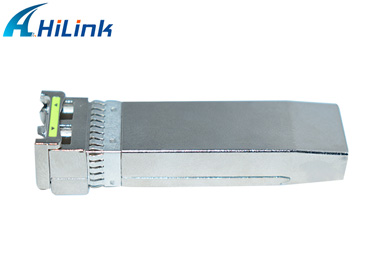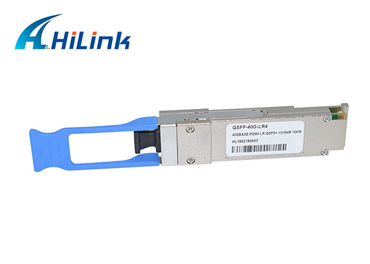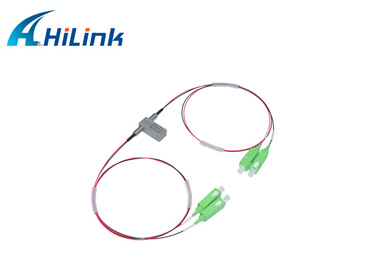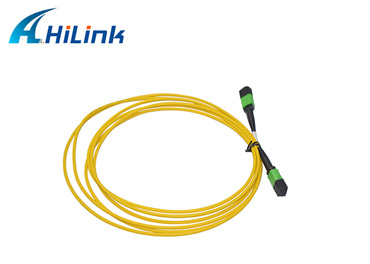Why Choose a 40G Data Centre Solution?
Feb. 16, 2023
Traditional network infrastructure is not sufficient for data centres to handle large volumes of traffic. Therefore more and more data centres are upgrading from 10G to 40G networking by deploying 40G data centre solutions. This article serves as a simple guide to 40G data centre solutions. It explains why a 40G data centre solution is needed and what products are required.
Why choose a 40G data centre solution?
In recent years, data traffic has been growing and 10G/25G Ethernet transmission is no longer sufficient to meet the demand for greater bandwidth and higher-speed data transmission in data centres. There is no doubt that 40G Ethernet is maturing and gaining popularity as more and more users choose to deploy 40G data centre solutions for data centre interconnection.
By combining existing Ethernet technologies and interfaces with new technologies, 40G data centre solutions can deliver faster data transfer speeds. As a result, complex tasks in the data centre will take less time to solve.
HILINK 120km 10G SFP+ Transceiver
40G Data Centre Solution Description
The 40G data centre solution is a good choice for long-distance transmission and switch-to-switch transmission. In addition, it will be suitable for data centres that require high bandwidth and low latency transmission, especially those with large virtualised virtual machines and container pools to meet the needs of users.
In a typical 40G data centre solution, 10G switches use 10G SFP+ transceivers to connect to rackmount servers. 40G switches act as the backbone switches in a 40G data centre architecture. the overall switching capacity of 40G Ethernet switches may be higher depending on the total number of ports and the power of the switching fabric itself.
In this type of architecture, 10G SFP+ modules, 40G QSFP+ modules and cabling systems will be utilised for data transfer.
What products are required?
If a data centre is planning to upgrade its legacy data centre architecture from 10G to 40G, the following networking products are essential.
40G QSFP+ modules
40G QSFP+ modules use four independent 10Gbps data channels in each direction to support 40Gbps aggregated bandwidth. QSFP+ has been widely used for 40GBASE-X Ethernet, a breakout to 10GBASE-X Ethernet, data centre aggregation and backplane applications as well as datacom switch and router connectivity. A variety of 40G transceivers are available on the market today, including 40GBASE-SR4, 40GBASE-LR4, 40GBASE-ER4, 40GBASE-CSR4, 40GBASE-PLRL4 and more. Hilink PSM QSFP LR4 is a transceiver module designed for 10km optical communication applications with MTP/MPO 8 Single Mode fibres connector.
40G Switches
40G Ethernet switches typically come with a set of SFP+, SFP28, QSFP+ and QSFP28 hybrid ports. They are typically used as core or backbone/aggregation layer switches in data centre applications. 40G Ethernet switches may have higher overall switching capacity, depending on the total number of ports and the power of the switching fabric itself.
2x2b Mechanical Optical Switch 5V Latching/non-latching
MTP®/MPO Cables
The MTP®/MPO cable consists of the MTP/MPO connector and the fibre optic. the MTP®/MPO connector is available in female (pinless) or male (pinned) versions. the MTP®/MPO connector significantly increases cable density and saves circuit card and rack space. MTP®/MPO cables are therefore ideally suited for current 40G/100G cabling and future network speed upgrades.
OM1/OM2/OM3/OM4/OM5 multimode cables
Multimode fibre is a common choice for achieving the long-distance 10 Gbit/s speeds required for LAN enterprise and data centre applications. There are several multimode fibre types available for high-speed network installations, including OM1, OM2, OM3, OM4 and OM5, each with different ranges and data rate capabilities.
Conclusion
Increasingly, network applications and traffic are driving the evolution of data centres from older to newer architectures. More and more data centres will choose to upgrade from 10G networking to 40G or even 100G networking. 40G data centre solutions will be a good choice for long-distance and switch-to-switch transport for large enterprises and data centres that require high bandwidth and low latency transport.















